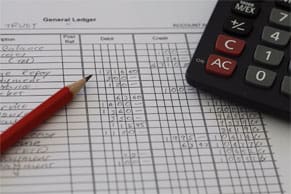Retained earnings are the cumulative profits that remain after a company pays dividends to its shareholders. These funds may be reinvested back into the business by, for example, purchasing new equipment or paying down debt. Healthy retained earnings are a sign to potential investors or lenders that the company is well managed and has the discipline to maintain solid unit margins.
Companies need to decide what is the best use of these funds at any given moment based on market conditions and economic realities. The answer depends on several factors including how much debt is currently on the balance sheet and whether to increase or decrease that debt load or does the current marketplace present specific opportunities that require capital infusion in order to grow and maximize results.
What are Retained Earnings?
Retained earnings (RE) is the sum left over after disbursing shareholder dividends.
It is surplus cash from a company’s profits in a specified period that is commonly reinvested in the business to reduce debt, bolster future profits and/or promote the company’s growth.
Retained Earnings Explained
Earnings for any reported period are either positive, indicating a profit, or negative, indicating a loss. Unless a business is operating at a loss, it generates earnings, which are also referred to as the bottom-line amount, profits or after-tax net income.
If a company pays dividends to investors, and its earnings are positive for a given period, then the amount left over after those payouts is that period’s retained earnings. That balance will normally appear on a retained earnings statement versus on a cash flow statement, which reflects only the cash and cash equivalents a company actually generates and spends over a specific period.
Purpose of Retained Earnings
Retained earnings are the portion of profits that are available for reinvestment back into the business. These funds may be spent as working capital, capital expenditures or in paying off company debts.
In some cases, a business may choose not to spend the funds but instead use retained earnings to establish a reserve, to shield the company against a future emergency or downturn, or to save for a future large expenditure, such as purchasing expensive capital equipment.
Retained Earnings vs. Revenue
Revenue is income earned from the sale of goods or services and is the top-line item on the income statement. Retained earnings, on the other hand, are derived from the bottom line, or profit of the income statement and is an important element in both the shareholder’s equity portion of the balance sheet and the company’s book value.
Key Differences
- Revenue is income, while retained earnings include the cumulative amount of net income achieved for each period net of any shareholder disbursements.
- In some cases, shareholders may prefer the company reinvest rather than pay dividends despite negative tax consequences.
- Revenue is a top-line item on the income statement; retained earnings is a component of shareholder’s equity on the balance sheet.
- Revenue indicates market demand for the company’s goods or services.
- Retained earnings are key in determining shareholder equity and in calculating a company’s book value.
Retained Earnings Formula and Calculation
Retained earnings are calculated by subtracting distributions to shareholders from net income.
Beginning Period Retained Earnings + Net Income / Loss – Cash Dividends – Stock Dividends
= Retained Earnings
Steps to Prepare a Retained Earnings Statement
Generally accepted accounting principles provides for a standardized presentation format for a retained earnings statement.
Headings: This consists of three lines. The first contains the company name. The second is the report name: “Statement of Retained Earnings.” And the third states the financial year for the reported retained earnings, such as ‘Fiscal Year Ended 2020.’
Beginning retained earnings balance from previous year: This is the first entry on this statement, it reports the retained earnings balance carried over from the previous year’s balance sheet. It is now referred to as the beginning retained earnings.
Prior period adjustments: Optional, such as for an error in calculating depreciation.
Retained earnings balance less any needed adjustments: This is the new amount of carried retained earnings after adjusting for errors.
Net income: This entry on this statement comes from the current year’s income statement (the year retained earnings are accounted for on this statement).
Dividend payments entry: A dividend is any payment made to shareholders. This third entry reflects the total of dividend payments for this statement period. This number is subtracted from the subtotal of the addition of the entries above.
Ending retained earnings: This entry is the total of subtracting the dividend payments from the net income + beginning retained earnings.
Additional information: This optional section of the statement is for notes pertaining to details affecting dividend payments such as stock purchase, new issuance of stocks or other pertinent information.
Example Retained Earnings Statement
| Company Name: Big Candy Co. Statement of Retained Earnings Fiscal Year Ending Dec 2019 |
||
|---|---|---|
| Beginning retained earnings balance – Dec 31, 2018 | $ 513,211 | |
| Prior period adjustments | ||
| Correction to depreciation expense | $ (4,252) | |
| Adjusted retained earnings – Dec 31, 2018 | $ 508,959 | |
| Plus net income | $ 230,233 | |
| Less cash dividends paid to stockholders | $ (5,967) | |
| Retained earnings – Dec 31, 2019 | $ 733,225 | |
Applications in Financial Modeling
The same elements that affect net income affect retained earnings, including sales revenue, cost of goods sold, depreciation and a range of other operating expenses.
Shareholder dividends can be paid out in cash or in stock. Cash dividends reduce the amount of the company’s cash account, and as such reduce asset value of the company’s balance sheet. Stock payments are not cash items and therefore do not affect cash outflow but do reallocate the portion of retained earnings to common stock and additional paid-in capital accounts.
Financial modeling is both an art and a science, a complex topic that we deal with in this article. A separate schedule is required for financial modeling of retained earnings. That schedule contains a corkscrew type calculation because the current period opening balance equals the previous period’s closing balance. The closing balance of the schedule links to the current balance sheet. Current net income or loss is added in the middle of the model, as is the subtraction of dividends paid.
The schedule’s closing balance links together the three financial statements: cash flow statement, income statement and the balance sheet.
Note that financial projections and financial forecasting can provide an estimate of the retained earnings that might be available for reinvestment. That insight is just one benefit of a forecasting exercise for all-size companies.
#1 Cloud
Accounting Software
Improve Accounting and Financial Management With Software
Accounting software can help any business accurately calculate its retained earnings, as well as streamline accounting processes and helping ensure accuracy and compliance with regulations.
In addition, use of finance and accounting software can help finance teams keep a close eye on cash flow and other critical metrics. By continually controlling spending, companies are more likely to end a fiscal period with cash on hand to use for growth.
Retained earnings is an important indicator of a company’s historical financial success or failure. The amount of retained earnings is often a good indicator of a company’s maturity, since established companies typically generate more net income and pay larger dividends.
Younger companies often need to reinvest more of their profits to grow and build reserves. For these firms, positive retained earnings can help them attract investors and prove to lenders that they have a strong and resilient business model.
To learn more about NetSuite accounting solutions, schedule a free consultation today.









